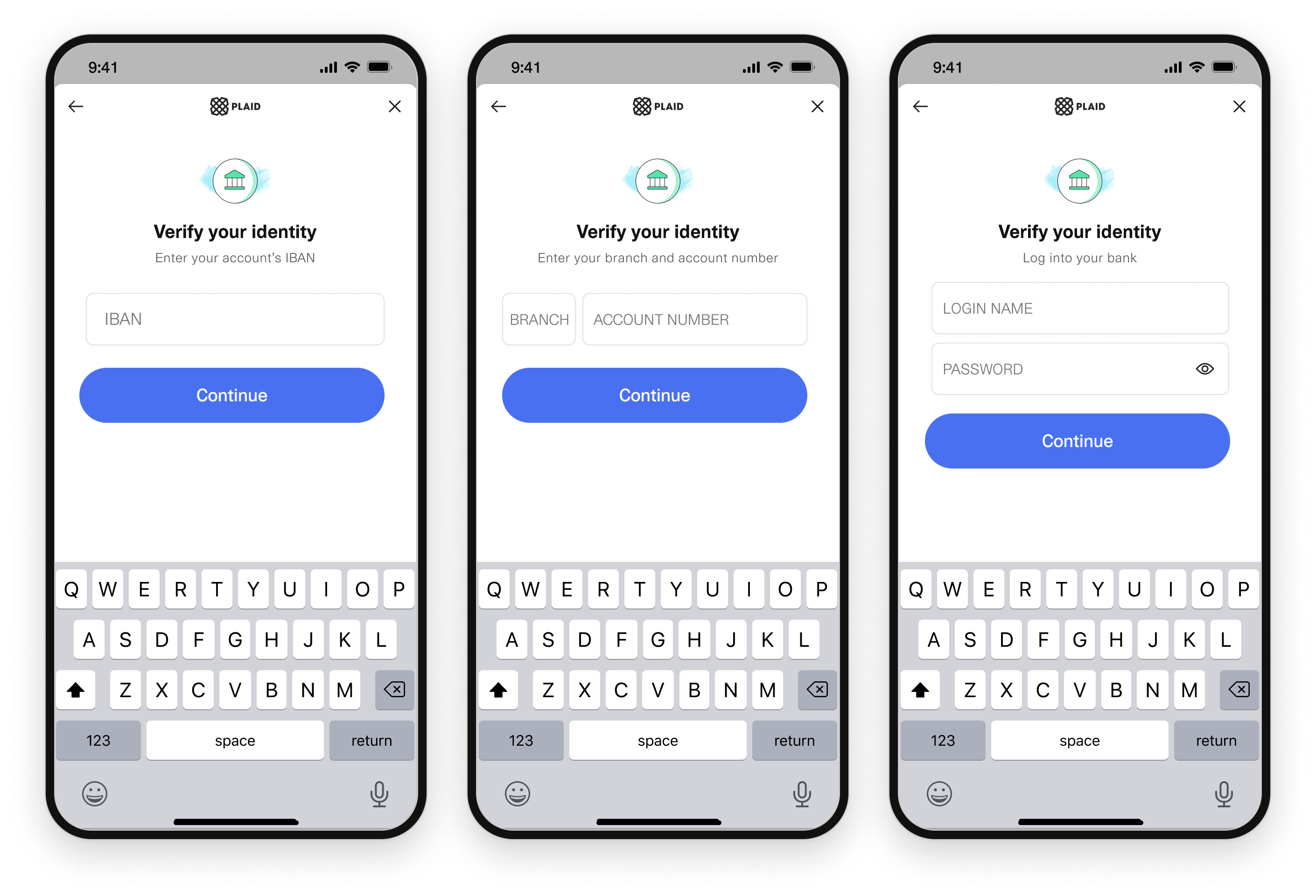
February 13, 2025
5 ways Plaid simplifies the process of expanding into Europe
Europe is a diverse market with many unique banking systems, authentication methods, and data formats. For businesses looking to expand into the market, the complexity of these systems is a significant challenge to overcome. Plaid helps businesses expand into Europe with simple solutions to these complex problems, all on one unified platform. Here’s how:
1. A unified approach for multiple markets
Plaid operates in 18 European markets and 20 worldwide, yet operates as a single API solution. Plaid’s unified API provides a simplified solution, offering broad access while reducing the need for region-specific development efforts. Whether launching in Europe or expanding from the UK or North America, you don’t have to worry about piecing together regional solutions.
2. Personalised user experiences
Plaid Link is our simple, front-end module that lets your users connect their financial accounts in seconds. It can be personalised for users across European markets in four key areas:
Consent taken care of: As part of PSD2 regulation, different products will require different scopes of access to be granted by the end user. It’s important that the consent pane gives users full visibility and control of what data they’re sharing, which may differ between products. Plaid automatically handles the various user consent processes, automatically updating consent based on region and products.
Customisable branding: Plaid enables tailored interfaces with your logos, colours, and bank preferences to enhance the user experience while maintaining brand consistency.
Optimised bank selection: Plaid is connected with thousands of banks across Europe. To reduce user friction in account connection, Plaid optimises bank selection by automatically ranking and filtering banks based on user relevance and product support.
Language localisation: Plaid supports 17 languages, such as German, Romanian, and Hindi, which creates a more inclusive experience for your users, builds trust, and increases engagement.
3. Simplifying bank authentication
Bank authentication methods in Europe vary widely, and some banks require additional information. For example, German banks require a 22-digit international bank account number (IBAN). These requirements can cause user drop-off or make it difficult to manage the various inputs optimally. Plaid handles these processes for you, helping reduce friction and maintain smooth user interactions while reducing your implementation burden.
Whether the bank requires IBAN, usernames or account details, Plaid automatically handles this for you.

Plaid supports every authentication method, including:
Redirect: Users are directed to their bank's app or login portal.
Decoupled: A separate device or app is used for authentication.
Embedded: Credentials are directly input by users and passed to the bank.
Each method has pros and cons. Plaid monitors what works best for each bank and optimises for conversion automatically.
4. A single data structure
European banks differ in how they structure account and transaction data. Without standardisation, managing this data can become overwhelming. Plaid’s consolidated API provides consistent data fields, regardless of bank format. This standard makes businesses more efficient in processes like account verification, credit underwriting, and customer monitoring. Plaid also provides categorisation taxonomies—such as personal finance and credit— to further simplify data interpretation and application.
5. Local payments without the hassle
Europe has a large, disparate payment infrastructure, ranging from Faster Payments in the UK to SEPA in the EU, and Elixir in Poland. This patchwork can be daunting, but Plaid simplifies the process with support for multiple payment rails and currencies.
Plaid allows customers to choose between instant and standard transfers which enhances their experience by aligning with cost and speed preferences. With the Instant Payments Regulation (IPR) coming at the end of 2025, users will be able to send and receive euros within seconds, 24/7, across the EU, without additional fees.
